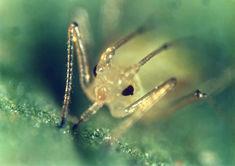
US researchers have found a way to tell apart aphids that spread plant viruses from those that do not in a breakthrough that could reduce pesticide use significantly.
The US department of agriculture scientists used protein biomarkers to differentiate between virus-spreading and virus-free aphids. The findings mark the first time that protein biomarkers have been linked to an insect’s ability to transmit viruses.
Although aphid-transmitted viruses that decrease yields and reduce product quality can be controlled by spraying insecticides, this is a costly treatment especially given that not all aphids transmit viruses.
Agricultural Research Service (ARS) scientists Michelle Cilia and Stewart Gray working at the service’s centre for agriculture and health in New York state found they can identify disease-carrying aphids by examining the types of proteins in their cells.
They knew from previous work that for aphids to pick up and transmit viruses, the virus must be able to interact with specific aphid proteins that direct movement of the virus through the insect and back into a plant during feeding.
By studying aphids in a laboratory and then carrying out a field-population study they discovered that the lab-raised insects’ ability to transmit yellow-dwarf viruses was linked to the presence or absence of nine biomarker proteins found in the insect cells. Further analysis showed that aphids consistently transmitted yellow dwarf virus only when they carried most, if not all, of the nine proteins. The findings are expected to lead to development of a test to identify potential disease vectors.